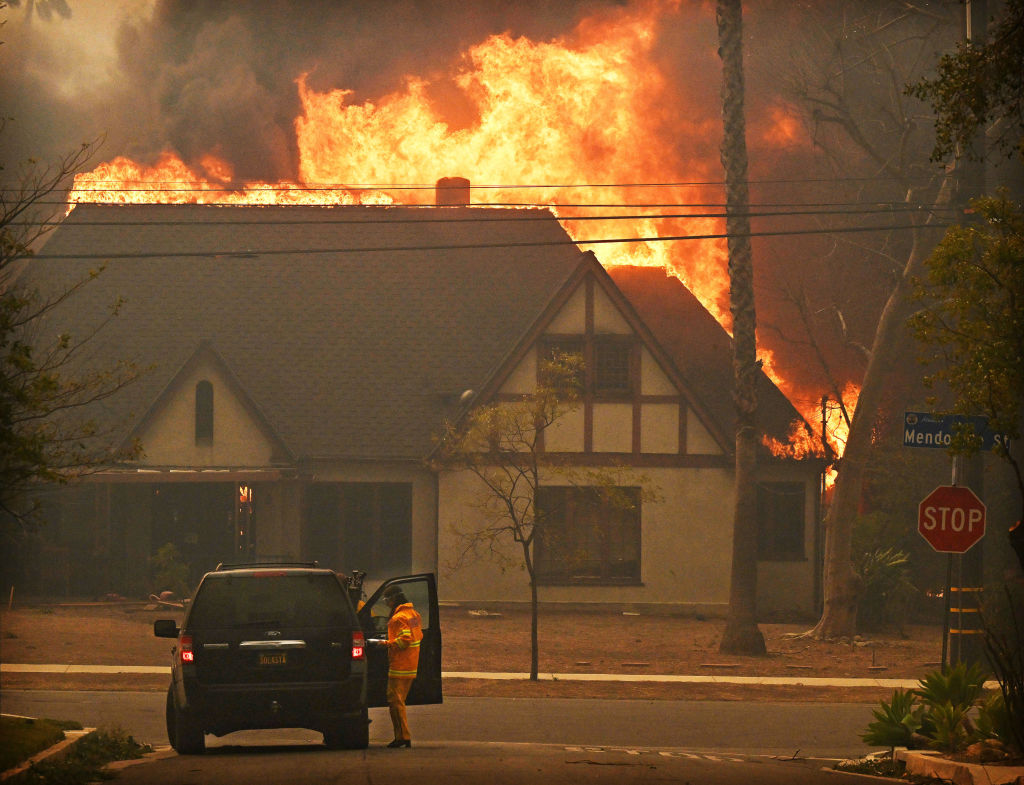Home Insurance Is Becoming Increasingly Unaffordable
Home insurance rates are skyrocketing faster than home prices and overall inflation, draining homeowners of billions of dollars in premiums amid rising policy cancellations — driven in part by insurers’ use of artificial intelligence to assess risk.

The process for handling the financial risks of homeownership is breaking down as the planet melts: insured losses from natural disasters in the United States now approach $100 billion a year, up from less than $5 billion in 2000. (Will Lester / MediaNews Group / Inland Valley Daily Bulletin via Getty Images)
Home insurance has never been more expensive: across all fifty states, rates are skyrocketing faster than home prices and economy-wide inflation, draining homeowners of billions of dollars in premiums amid rising policy cancellations — especially as insurers turn to artificial intelligence to determine risk.
As the Lever reported last year, the process for handling the financial risks of homeownership is breaking down as the planet melts: insured losses from natural disasters in the United States now approach $100 billion a year, up from less than $5 billion in 2000.
Since 2008, homeowners have seen their insurance costs increase 74 percent, and in the last three years alone, premiums rose twice as fast as inflation, totaling $21 billion in additional insurance payments. During this period, premiums increased in 95 percent of American zip codes. While homes in disaster-prone states like Florida and California remain the most expensive to insure, the biggest premium increases occurred in Arizona, Illinois, Pennsylvania, and Utah.
And the rate increases have been lucrative for insurance companies: property and casualty insurers — which include home, rental, and auto — profited $169 billion last year, a 90 percent increase over 2023 and a 333 percent increase over 2022, as annual premium payments reached $1 trillion for the first time.
More home insurance companies are relying on AI to boost profits and cut margins, using the technology to underwrite policies, identify risks, and justify rate hikes. This year, consulting giant McKinsey confirmed that the application of artificial intelligence in underwriting has enabled insurers to spike premiums by as much as 15 percent. Since 2023, nearly seven in ten home reinsurance companies — insurance for insurance policies — have begun using AI to predict risk and justify rate increases. Using automation is more than a quirk for the industry, it’s a business model: venture-capital-funded Stand Insurance just raised $35 million for its AI-powered coverage designed for high-risk areas.
Executive pay packages tied to profitability mean that homeowners’ losses are insurers’ gain. CEOs at the nation’s top ten auto and home insurance firms took home $391 million in compensation over the last three years while hiking premiums by 24 percent. American Family Insurance, which serves more than twelve million customers, raised rates by roughly 17 percent last year, and more than doubled its executive compensation to $8.4 million.
For some would-be homeowners, insurance costs are standing between them and the American dream: last year, the number of California home sales that fell through after buyers failed to secure insurance doubled.